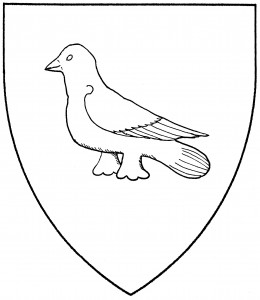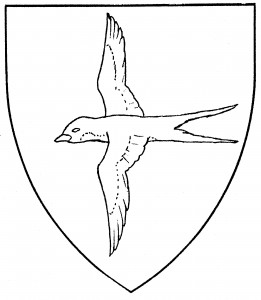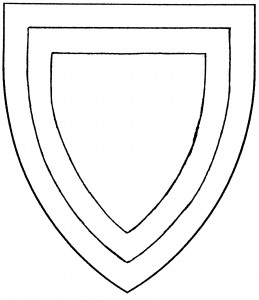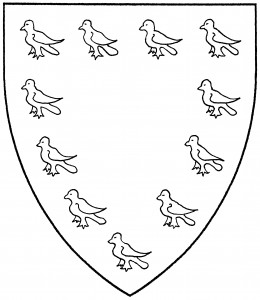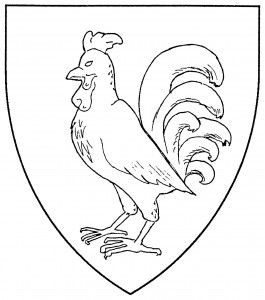The martlet is an heraldic bird, in many ways a stylized and generic bird. Blazoned as a merle, merlette, or merlotte (“blackbird”), it was found in French armory as early as c.1185, in the canting arms of Mello [Pastoureau 150]. In English armory, the French term quickly became conflated with the martinet, a type of swallow or swift [Brault 241], and soon became highly stylized in form. The martlet is found as early as c.1244, in the arms of the Earls of Pembroke [ANA2 210]. It remained a popular charge through the end of our period: of the birds, only the eagle was more frequently used.
While the martlet’s exact form varied throughout period, by far the most common trait was its lack of legs: small tufts of feathers take their place. (This is due to the legend that the martlet was always airborne, never lighting on the ground.) For purposes of Society blazonry, this lack of legs is the martlet’s defining characteristic. The martlet was sometimes drawn without a beak (especially in France); post-period depictions (especially in England) gave it the forked tail of the swallow. The illustration is taken from the arms of Sir Geoffrey Luttrell, in the Luttrell Psalter, mid-14th C.
In the English system of cadency, the martlet is the brisure of the fourth son. The martlet is close by default.
Éadaoin na Slebhte bears: Gules, three martlets Or.
Tamsin Wylde bears: Barry vert and argent, six martlets Or.
Lie de Camurac bears: Per chevron vert and azure, three martlets argent.
